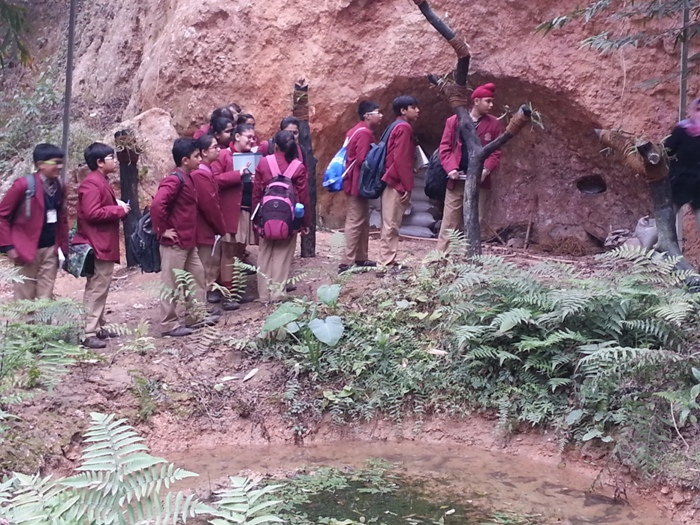Excursion to Aravali Biodiversity Park, Vasant Vihar - class 7
When the students of class 7 studied the concepts of pollination in flowers, crown, storeys and under-storeys in the forest, the dispersal of seeds by different agents of dispersal in their biology classes, they were curious to see these in real life. So their teachers felt that Aravalli Biodiversity Park would be the right spot for a live demo of what they had learnt from the book!
Students were taken in small groups on different dates; 16, 17, 22 and 23 January, 2014 to facilitate a fruitful exercise.
The park is situated in the foothills of the Aravalis and is spread over an area of 692 acres. Inevitably it is a storehouse of an enormous variety of the endemic species of flora and fauna found in Delhi.
Students were further divided into 2 groups once they reached the park. Each group was guided by an expert from the park. A long nature trail led the groups deep inside. A mind boggling medley of variety awaited us. Vibrant birds, thick and diverse vegetation, beautiful butterflies and unusual rocks were abundant. What particularly caught the attention of the students were the pieces of mica that they sighted.
[gallery columns="2"]
Some of the endemic species of flora seen by the students were Prosophis Juliflora ( which arrived with the British), Calotropis Prosera, Belanitis Egyptica, etc. The experts informed the students about the hazardous nature of Prosophis Juliflora. He showed us how the leaves of this tree never decompose even after falling to the ground and also that the roots of this plant suck up the water from the soil, reducing the fertility of the soil. The students were told that government is taking steps to remove these species from the area as they are harming the environment.
The children were excited to spot squirrels, the mongoose, butterflies, honeybees, etc.
The groups then assembled at a common place from where they were led into a hall to watch an interesting and informative movie that had been shot in the park.
The students asked a number of questions. They were filled with curiosity and were extremely animated. Answering one of the queries on why sparrows are no more seen around in Delhi, the expert answered that it is so because of the increasing human population, which has resulted in the dearth of open spaces for these birds; also the increasing radiation from mobile networks have hurt their habitat. Therefore they have moved away from the city to areas where they have enough spaces for nesting.
The excursion was not only high on the information quotient, but equally, a refreshing escape from the hustle-bustle and pollution of our city.
We saw first-hand how animals, birds and insects existed compatibly in their natural habitat inside the park. It was also very reassuring to notice the delicate upkeep of the treasure that is the park.
Submitted by Ms. Purvi Mehta.













